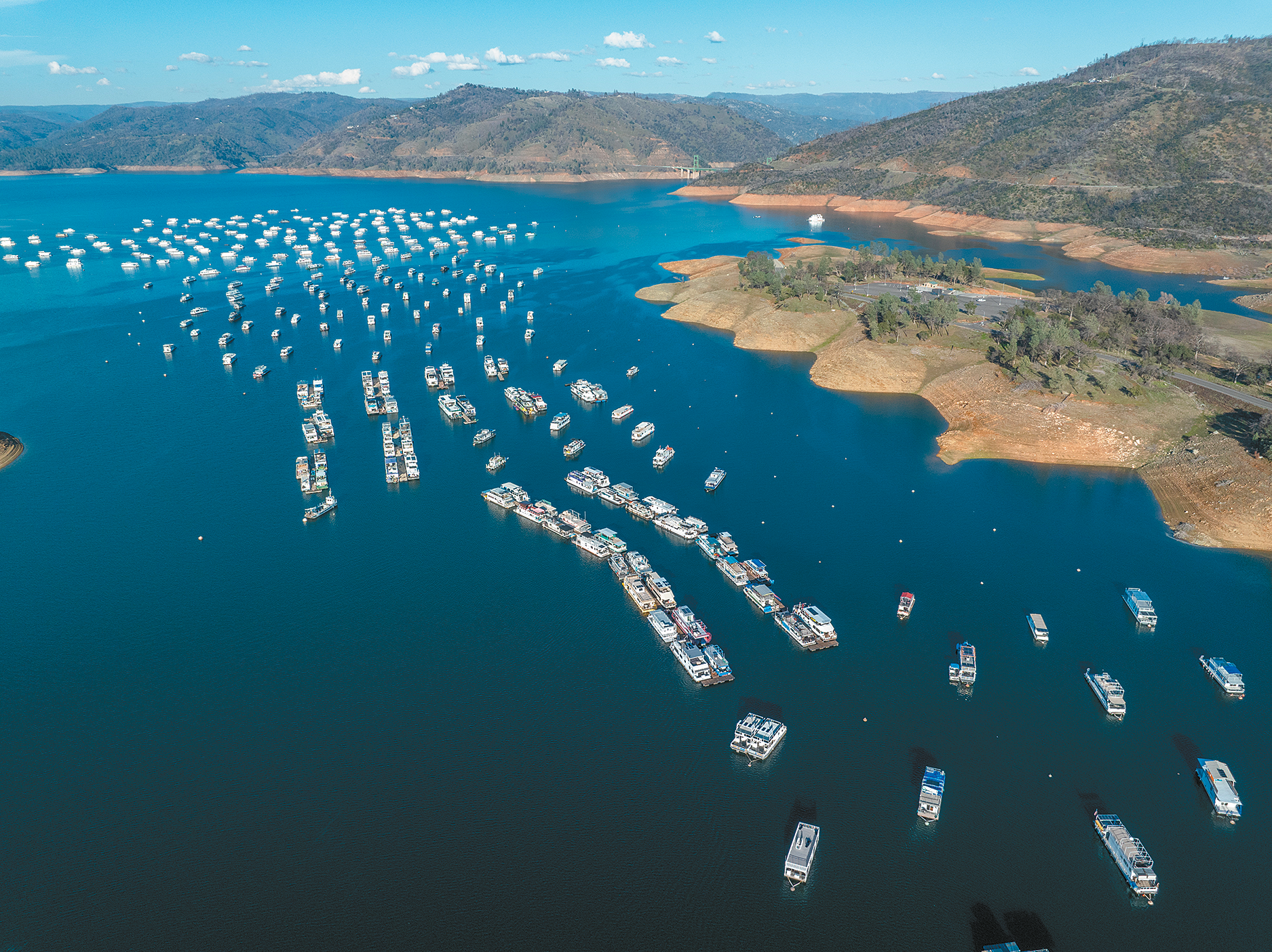Despite storms, water-delivery pledges remain low

Photo/California Department of Water Resources
State and federal water officials last week announced preliminary water deliveries of 15% of requested supplies for 2024 from the State Water Project and the federal Central Valley Project.
But both the California Department of Water Resources and the U.S. Bureau of Reclamation said the water-delivery pledges don’t take into account recent and anticipated storms expected to add to California’s water supply.
The recent storms boosted water levels in some key reservoirs and snowpack in the Sierra Nevada.
Lake Oroville, the State Water Project’s largest reservoir, was at 135% of average on Feb. 25. Lake Shasta, the Central Valley Project’s largest reservoir, was at 120% of average.
“We will continue to assess our State Water Project allocation forecast as more storms materialize in February and March,” DWR Director Karla Nemeth said in a statement. “This season is an important reminder of our extreme conditions and shift to bigger, flashier storms and the need to continue increasing the state’s ability to capture and store stormwater when it comes as rain instead of snow.”
As of Feb. 21, the statewide snowpack was at 86% of average for the date, up from 28% on Jan. 1. It stood at 69% of its April 1 average, which is considered the peak level for the snow season.
The State Water Project allocation represented a modest increase from a 10% water-delivery pledge in December. The agency updates its allocation monthly based on assessments of rainfall and snowpack, with a final allocation generally determined in May or June.
“We’re certainly encouraged by the hydrology this year,” said Chris Scheuring, California Farm Bureau senior counsel. “It’s early. We hope and expect as the spring unfolds that those numbers will come up, as they often do in a wet year with a good snowpack. There is certainly a fair amount of wet season left for us to travel before we know for sure what those numbers will look like. But we’re optimistic.”
The Bureau of Reclamation announced a 15% water delivery from the Central Valley Project for water agencies south of the Sacramento-San Joaquin Delta. But it said senior water-rights holders, including the south-of-the-delta San Joaquin River Settlement Contractors and north-of-the-delta Sacramento River Settlement Contractors would get 100% of contract water supplies.
In a statement, Federico Barajas, executive director of the San Luis & Delta-Mendota Water Authority, expressed hopes for increased water deliveries.
“It’s crucial for us to understand that Reclamation’s initial allocation of 15% for Authority irrigation water service and repayment member agencies is based on the Feb. 1 forecast and does not reflect recent storm events,” Barajas said.
However, he added, “Many expected the initial allocation to be higher, particularly given current reservoir conditions. This low initial allocation is particularly challenging for agricultural producers, who are reliant on these projections for planning crops to grow during the year and for acquiring the financing necessary to support food production.”
Barajas said the water authority has received water allocations of 20% or less of requested supplies six times in the last decade.
“California’s water system is no longer able to provide the reliability necessary to support the demands placed on it,” he said. “Rainfall and snowpack patterns are changing, and our water management strategies must be responsive to this new reality.”
Karl Stock, Reclamation’s Great Basin regional director, said last year’s drenching atmospheric river storms provided some enduring benefits, leaving “most of our reservoirs in good shape as we progressed to the 2024 water year.”
“Precipitation totals this water year started off slowly, evidenced by the fact we were well below average at the time of the Feb. 1 water supply forecast,” Stock said in a statement. “Since that time, several storms have boosted the Sierra-Nevada snowpack, bringing us to near normal conditions for Northern California. It is likely we will see the water supply benefits from these storms in the March 1 forecast update.
“At the same time, we have to be prepared for and respond accordingly to the possible re-emergence of drier conditions.”




